Seneca Arts and Culture Centre opens in upstate New York
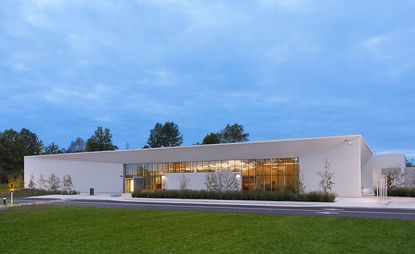
The Seneca, a Native American tribe in upstate New York, have had profound impacts on the United States, ranging from natural remedies to the country's embrace of democracy. The fact that you probably didn't know these things testifies to the importance of architect Francois deMenil's Seneca Art and Cultural Center, the new focal point of the Ganondagan State Historic Site, located on one of the Seneca's largest former settlements in Victor, just southeast of Rochester.
The project, which has been envisioned for about 30 years, explores Seneca culture with year-round exhibitions, programs and events. The 17,000 sq ft, one-storey building contains exhibition spaces, an auditorium, classrooms, retail, and administrative offices.
The rectangular building's form was inspired by two of the tribe's seminal symbols: the Hiawatha Belt, a symbol-rich gesture of peace between the five Iroquois nations (depicting five linked cubes projecting from the 'Tree of Peace'), and the Longhouse, a long, narrow native dwelling that can expand and contract to accommodate changes in family size. Like both, the building has a strong horizontal axis, with galleries extending laterally from either side of a central entry. White cedar siding is beveled inward along the edges of the facade, uniting the roof and walls into a singular mass, articulating the simple form, and modulating the entry of sunlight. The building sits lightly on its location, partially buried into the land at its rear.
Inside, large glass curtain walls flood the space with illumination. Beveled skylights evoke the building's shape and minimise direct light in warmer months. Spaces flow smoothly from one to the next, and a minimal white palette defers to artworks and exhibitions.
Mirroring a typical native procession, once you stop at the centre, you then make your way to the Ganondagan site's other destinations, which include a replica of a 17th century bark longhouse, fields of Iroquois white corn and wildflowers, a granary, and several hiking trails.
'It's very important to acknowledge that the Seneca are still in this area, following their customs, even speaking their native language,' said deMenil. 'That recognition was a very soulful part of the project.'
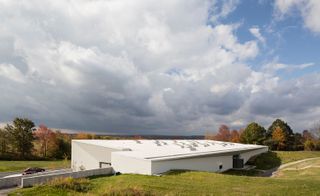
The building was designed to explore the Seneca Native American tribe's culture with year-round exhibitions, programs and events. Photography: Paul Warchol
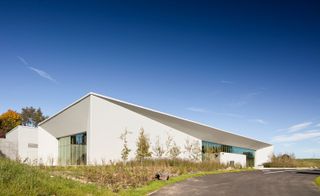
The rectangular building's form was inspired by two of the tribe's seminal symbols. Photography: Paul Warchol
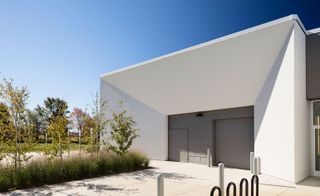
The low, horizontal building has galleries extending on either side of its dramatic entrance. Photography: Paul Warchol
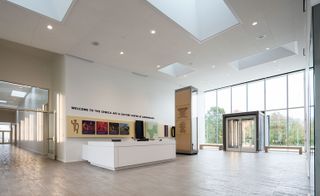
Inside, large glass curtain walls flood the space with natural light. Photography: Paul Warchol
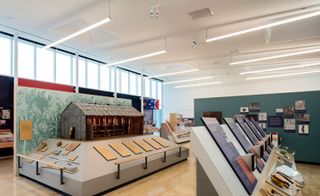
A minimal white palette allows the exhibits to take centre stage. Photography: Paul Warchol
Wallpaper* Newsletter
Receive our daily digest of inspiration, escapism and design stories from around the world direct to your inbox
-
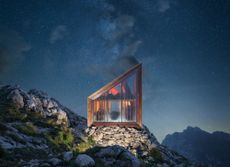 The visual feast of the Sony World Photography Awards 2024 is revealed
The visual feast of the Sony World Photography Awards 2024 is revealedThe Sony World Photography Awards 2024 winners have been revealed – we celebrate the Architecture & Design category’s visual artists
By Ellie Stathaki Published
-
 Don’t Move, Improve 2024: London’s bold, bright and boutique home renovations
Don’t Move, Improve 2024: London’s bold, bright and boutique home renovationsDon’t Move, Improve 2024 reveals its shortlist, with 16 home designs competing for the top spot, to be announced in May
By Ellie Stathaki Published
-
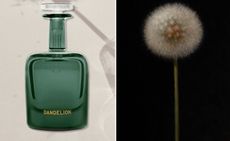 Perfumer H has bottled the scent of dandelions blowing in the wind
Perfumer H has bottled the scent of dandelions blowing in the windPerfumer H has debuted a new fragrance for spring, called Dandelion. Lyn Harris tells Wallpaper* about the process of its creation
By Hannah Tindle Published
-
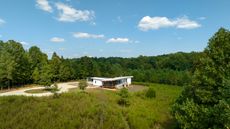 A low-energy farmhouse provides a rural escape in North Carolina
A low-energy farmhouse provides a rural escape in North CarolinaThis low-energy farmhouse is a net zero architectural re-set for a Californian client, an East Coast relocation for a more engaged and low-key lifestyle
By Jonathan Bell Published
-
 A Petra Island house rises from Frank Lloyd Wright's original drawings
A Petra Island house rises from Frank Lloyd Wright's original drawingsBased on Frank Lloyd Wright drawings, the cantilevering Petra Island Massaro House, located in New York’s Hudson Valley, is now open to visitors
By Craig Kellogg Published
-
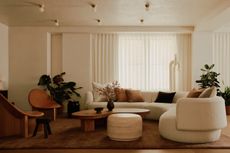 An Upper West Side apartment by General Assembly nods to its history
An Upper West Side apartment by General Assembly nods to its historyAn Upper West Side apartment in New York, born out of the reimagining of two neighbouring units, is refreshed by General Assembly for a young family
By Ellie Stathaki Published
-
 New York's Leica store echoes the brand's blend of heritage and innovation
New York's Leica store echoes the brand's blend of heritage and innovationLeica store throws open its doors in New York's Meatpacking District, courtesy of Brooklyn based Format Architecture Office
By Adrian Madlener Published
-
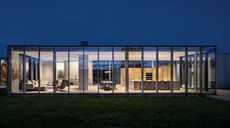 Hudson Valley Residence is a low-lying retreat that seamlessly blends into the horizon
Hudson Valley Residence is a low-lying retreat that seamlessly blends into the horizonDesigned by HGX Design, Hudson Valley Residence is a scenic home offering unobstructed views across the Catskill Mountains in Upstate New York
By Tianna Williams Published
-
 Boise Passive House’s bold gestures support an environmentally friendly design
Boise Passive House’s bold gestures support an environmentally friendly designBoise Passive House by Haas Architecture combines sleek, contemporary design and environmental efficiency
By Ellie Stathaki Published
-
 At the Hilbert Museum of California Art’s expanded home, art and architecture converge
At the Hilbert Museum of California Art’s expanded home, art and architecture convergeThe Hilbert Museum of California Art expands its home, courtesy of Los Angeles architecture studio Johnston Marklee
By Ellie Stathaki Published
-
 Pearlman Cabin by John Lautner is an organic Californian mountain retreat
Pearlman Cabin by John Lautner is an organic Californian mountain retreatJohn Lautner’s midcentury Pearlman Cabin, tucked away in the Californian mountain resort of Idyllwild, is a striking example of organic architecture
By Mimi Zeiger Published